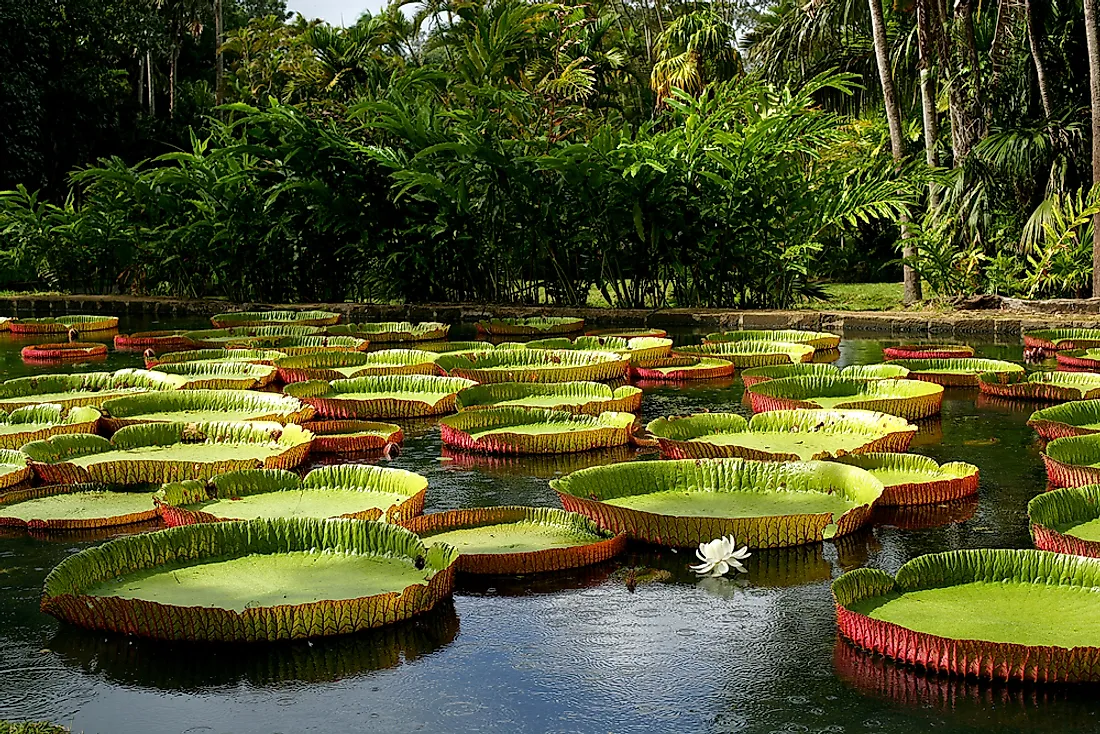Amazing Facts About The Victoria Amazonica

Victoria amazonica is the world’s largest water lily and among the largest in the Nymphaeaceae family. The first discovery was in 1801 in Bolivia and it is indigenous to the Amazon River basin’s shallow waters. This species is the national flower of the Republic of Guyana and appears on the country’s coat of arms. The flower is famous for its enormous circular leaves. The common names for the water lily include Amazon water-lily, Victoria-lily, or Giant water lily.
Description
The Giant water lily has large leaves that have a diameter of up to 10 feet, which float on water, and a submerged stalk that is up to 26 feet long. The leaves start as pointy heads that expand so fast up to 5 square feet each day. Under the surface, the leaves are red and have sharp spines that defend the plant from herbivorous fish. The species’ flowers are short-lived and last about 48 hours, appearing as white when it opens, initially as female. The sweet scent they emit attracts beetles which carry pollen from other plants. After the transfer of the pollen, the flower shuts as fertilization takes place to trap the beetles inside. When the flower opens the next evening, after transforming to mature male during the day, the beetles fly to a different white flower. After this process, the flower closes up descending below the water surface.
History of Classification
It is classified under the genus of Victoria and the family of Nymphaeaceae, the species found its first description published in October 1837 by John Lindley. Lindley gave the plant the botanical name of Victoria Regia, with the genus named after Queen Victoria. Earlier in 1832, Eduard Poeppig accounted for the species as Euryale amazonica describing a similarity to Euryale ferox. James De Carle Sowerby acknowledged the description by Poeppig in 1850 and used the term amazonica. Lindley, however, rejected this new name. In the 20th century, the Victoria amazonica name became widespread.
Cultivation At Kew Gardens
The Royal Botanical Gardens in Kew, London, raise the water lily species as an annual plant. Hand pollination is used in summer and helps in collection of seeds in autumn. A consistent temperature of 59°F prevents the seeds from death or premature germination. Nicking the seeds help them to germinate, which happens after ten days. The sprouted seeds start out in a small vessel placed in water, and gradually move into larger pots and finally onto one that is one ton with loam soil as a substrate. Seedlings require about 89°F while adult plants grow between 79°F and 89°F. Since the plant needs light, there is the use of horticultural auxiliary bulbs in winter for about 12 hours. The giant water lily dies in autumn due to lack of light.
Uses and Threats
Victoria amazonica is an ornamental plant and highly prized. The seeds are also used as food when roasted. The design of Joseph Paxton’s Crystal Palace in 1851 came from the leaves of the plant. The giant water lily habitat is highly specialized, although the plant’s status remains unthreatened. Climate change in the Amazon basin and destruction of the rainforest may pose a threat to the Amazon water-lily.











